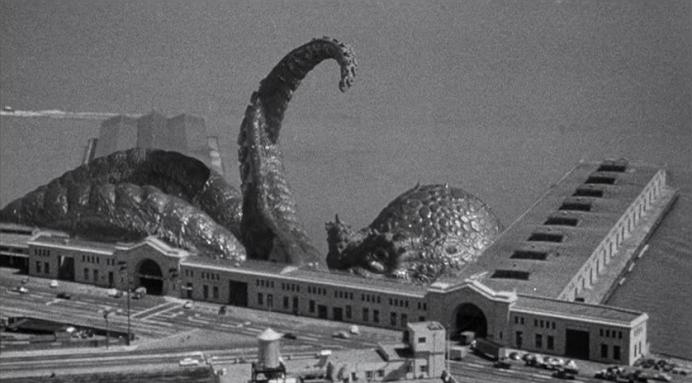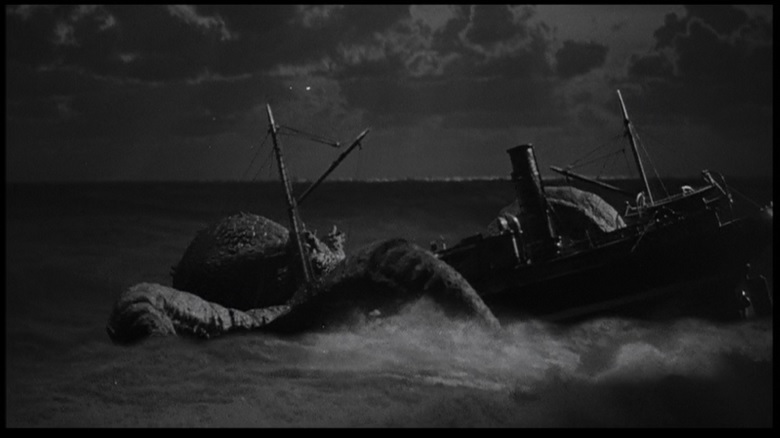- Home
- Features
- Movies/Media
- Collectibles
- Comics/Books
-
Databases
-
Figure Database
>
-
X-Plus Toho/Daiei/Other
>
- X-Plus 30 cm Godzilla/Toho Part One
- X-Plus 30 cm Godzilla/Toho Part Two
- X-Plus Large Monster Series Godzilla/Toho Part One
- X-Plus Large Monster Series Godzilla/Toho Part Two
- X-Plus Godzilla/Toho Pre-2007
- X-Plus Godzilla/Toho Gigantic Series
- X-Plus Daiei/Pacific Rim/Other
- X-Plus Daiei/Other Pre-2009
- X-Plus Toho/Daiei DefoReal/More Part One
- X-Plus Toho/Daiei DefoReal/More Part Two
- X-Plus Godzilla/Toho Other Figure Lines
- X-Plus Classic Creatures & More
- Star Ace/X-Plus Classic Creatures & More
-
X-Plus Ultraman
>
- X-Plus Ultraman Pre-2012 Part One
- X-Plus Ultraman Pre-2012 Part Two
- X-Plus Ultraman 2012 - 2013
- X-Plus Ultraman 2014 - 2015
- X-Plus Ultraman 2016 - 2017
- X-Plus Ultraman 2018 - 2019
- X-Plus Ultraman 2020 - 2021
- X-Plus Ultraman 2022 - 2023
- X-Plus Ultraman Gigantics/DefoReals
- X-Plus Ultraman RMC
- X-Plus Ultraman RMC Plus
- X-Plus Ultraman Other Figure Lines
- X-Plus Tokusatsu
- Bandai/Tamashii >
- Banpresto
- NECA >
- Medicom Toys >
- Kaiyodo/Revoltech
- Diamond Select Toys
- Funko/Jakks/Others
- Playmates Toys
- Art Spirits
- Mezco Toyz
-
X-Plus Toho/Daiei/Other
>
- Movie Database >
- Comic/Book Database >
-
Figure Database
>
- Marketplace
- Kaiju Addicts
|
It Came from Beneath the Sea is a 1955 American black-and-white science fiction giant monster film from Columbia Pictures, produced by Sam Katzman and Charles Schneer, directed by Robert Gordon, that stars Kenneth Tobey, Faith Domergue, and Donald Curtis. The script by George Worthing Yates was designed to showcase the stop motion animation special effects of Ray Harryhausen. It Came from Beneath the Sea was released as the top half of a double bill with Creature with the Atom Brain.
The French survivors are questioned by psychiatrists, and when the first sailor's description of a creature with giant tentacles is met with skepticism, the other sailors refuse to testify. Lesley is able to convince the first sailor to repeat his story for government officials, who then have the evidence they need. The U.S. government halts all sea traffic in the North Pacific without revealing the reason. John flies out to sea to trace a missing ship, while Pete and Lesley follow up on a report of three missing people off the coast of Oregon. The local sheriff, Bill Nash (Harry Lauter), takes Pete and Lesley to the site of the attack, where they find a giant suction cup imprint in the beach sand; they then request that John join them. Bill is later attacked along the beach by the giant octopus, right in front of the two scientists. He escapes, and together they hastily arrange for all Pacific coast waters to be mined before departing for San Francisco and the Navy's headquarters. An electrified safety net is strung underwater across the entrance to San Francisco Bay to protect the Golden Gate Bridge, which has also been electrified. John takes a helicopter along the shoreline and baits the sea with dead sharks in an effort to lure the creature inland. Lesley demonstrates to reporters a special jet-propelled atomic torpedo, which they hope to fire at the giant octopus, while driving it back to the open sea before detonating the weapon. Later that day, the creature demolishes the underwater net, irritated by the electrical voltage, and heads toward San Francisco. The navy orders the Golden Gate Bridge abandoned, but when John learns that the electric circuit there has been left on, he races to the bridge to shut it off. The creature, however, catches sight of the bridge and attacks it, the electrical voltage irritating it even more. Pete is able to rescue John just before a bridge section is brought down by a giant tentacle. The residents of San Francisco panic and begin a mass exodus down the peninsula. The navy struggles to evacuate the Embarcadero and the Ferry Building, which is battered by the creature's giant tentacles. When more people are attacked and killed, the Defense Department authorizes Pete to take out the submarine and fire the torpedo; John joins Pete while Lesley remains at the base. Flamethrowers push the giant tentacles back into the sea, but when Pete fires the jet torpedo into the creature, it grabs the submarine. Using an aqualung, Pete swims up to the massive body and places explosive charges before being knocked out by the creature's flailing tentacles. John then swims out and shoots at one of its eyes, forcing the giant octopus to release the submarine; he then pulls Pete to safety. Back at the base, as the creature turns toward the open sea, the torpedo is detonated, completely destroying the giant cephalopod. Cast
Production Much of the filming was done at the San Francisco Naval Shipyard, including scenes aboard a submarine, and several naval personnel were given supporting roles. To keep shooting costs low, director Robert Gordon shot inside an actual submarine, both above and under water, using handheld cameras. For a scene that takes place on a stretch of Pacific coastline, Gordon and his crew dumped several truckloads of sand onto a sound stage at Columbia, which they backed with a rear projection screen. During their scene together, Kenneth Tobey found himself sinking through the sand to the point of appearing shorter than Faith Domergue on camera, forcing him to dig himself out of the hole between every take. A more extensive love scene had been written for the characters but was literally torn out of the shooting script by Sam Katzman, to keep principal photography from going over schedule. The octopus stop-motion effects were designed and animated by Ray Harryhausen. The effects budget, however, was getting slightly out of hand, and for this reason, Sam Katzman allowed Harryhausen only enough money for animating six of the octopus' eight tentacles; two were eliminated on the final shooting miniature. Harryhausen jokingly named his giant octopus "the sixtopus" (this behind-the-scenes detail was revealed years later in a science fiction magazine). For the scenes where a single tentacle is seen moving up and around the bridge superstructure, Harryhausen used a single large model tentacle instead of employing the complete animation model. Some of the bridge scenes employ a shooting miniature of a bridge support, which was then composited in post-production over live footage of the real support; this is the bridge section that the "sixtopus" is seen clinging to in the final scene. Reception It Came from Beneath the Sea was teamed on a theatrical release double bill with Columbia's Creature with the Atom Brain. Its success led to Harryhausen-Schneer collaborating again for Earth vs. the Flying Saucers the following year. Time Out called it a "minor entry in the '50s cycle of radiation-paranoia sci-fi pics"; and Moria noted, "Most of the film is told in a stolid, flat style that seems more like an Army training documentary than a dramatic film. The problem is that one has to plod through three-quarters of the film to get to the monster sequences...Certainly, when the climactic scenes of wholesale destruction do arrive they are great"; whereas Allmovie wrote that the film "utilized elements of the documentary, with a narration that makes the first half of the movie seem almost like a newsreel, which gives the action a greater immediacy. ..And...This is all presented in a cool, clipped realistic manner, with a strong but convincingly stated macho tone...It all served to make the first quarter hour of the film almost irresistibly suspenseful, and gave Harryhausen one of the best lead-ins that one could ask for, for his effects"; Leonard Maltin also praised the films "Breathtaking special effects"; and the Radio Times, whilst acknowledging it as a "classic monster flick," also called the film "Predictable tosh, but good 1950s fun." Legacy
The four-issue comic book mini-series It Came from Beneath the Sea... Again (2007), released by TidalWave Productions as part of their Ray Harryhausen Signature Series, continued the story. A preview of the first issue was included on the 50th Anniversary DVD release of the film.
0 Comments
Leave a Reply. |
Release Dates
November 2023
|
|
© 2011-2024 Kaiju Battle. All Rights Reserved.
|
Visit Our Social Media Sites
|
Proudly powered by Weebly
|
- Home
- Features
- Movies/Media
- Collectibles
- Comics/Books
-
Databases
-
Figure Database
>
-
X-Plus Toho/Daiei/Other
>
- X-Plus 30 cm Godzilla/Toho Part One
- X-Plus 30 cm Godzilla/Toho Part Two
- X-Plus Large Monster Series Godzilla/Toho Part One
- X-Plus Large Monster Series Godzilla/Toho Part Two
- X-Plus Godzilla/Toho Pre-2007
- X-Plus Godzilla/Toho Gigantic Series
- X-Plus Daiei/Pacific Rim/Other
- X-Plus Daiei/Other Pre-2009
- X-Plus Toho/Daiei DefoReal/More Part One
- X-Plus Toho/Daiei DefoReal/More Part Two
- X-Plus Godzilla/Toho Other Figure Lines
- X-Plus Classic Creatures & More
- Star Ace/X-Plus Classic Creatures & More
-
X-Plus Ultraman
>
- X-Plus Ultraman Pre-2012 Part One
- X-Plus Ultraman Pre-2012 Part Two
- X-Plus Ultraman 2012 - 2013
- X-Plus Ultraman 2014 - 2015
- X-Plus Ultraman 2016 - 2017
- X-Plus Ultraman 2018 - 2019
- X-Plus Ultraman 2020 - 2021
- X-Plus Ultraman 2022 - 2023
- X-Plus Ultraman Gigantics/DefoReals
- X-Plus Ultraman RMC
- X-Plus Ultraman RMC Plus
- X-Plus Ultraman Other Figure Lines
- X-Plus Tokusatsu
- Bandai/Tamashii >
- Banpresto
- NECA >
- Medicom Toys >
- Kaiyodo/Revoltech
- Diamond Select Toys
- Funko/Jakks/Others
- Playmates Toys
- Art Spirits
- Mezco Toyz
-
X-Plus Toho/Daiei/Other
>
- Movie Database >
- Comic/Book Database >
-
Figure Database
>
- Marketplace
- Kaiju Addicts








 RSS Feed
RSS Feed